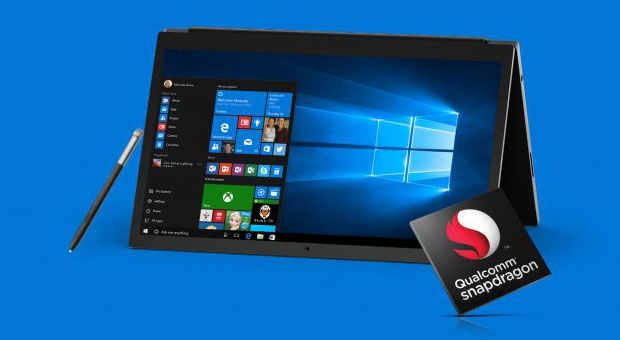Microsoft on Wednesday announced the compatibility of Windows 10 and native Windows apps with ARM-based processors, including Qualcomm’s Snapdragon, which currently powers a large percentage of Android devices.
One of the highlights at this year’s Windows Hardware Engineering Community (WinHEC) event in Shenzhen, China, the new partnership will make it possible for Windows applications, peripherals and enterprise solutions to run on new mobile, power efficient and always-connected cellular PCs.
Through the collaboration, the companies aim to encourage hardware partners to develop Qualcomm Snapdragon-powered Window 10 devices that run x86 Win32 and universal Windows apps. In addition to Microsoft’s own productivity applications, such as Microsoft Office, they could include third-party programs such as Adobe Photoshop, as well as Windows games, which are developed by numerous companies.
The applications would be the same as those meant to run on a desktop or laptop, but they would be fully compatible with cellular PCs — meaning that mobile users no longer would have to sacrifice functionality or features.
Evolution of the Smartphone
Microsoft largely was unsuccessful in its efforts to break into the smartphone space with its Windows Phone devices. Instead, it has pivoted toward cellular PCs, which will be built around the x86 code of Windows 10, utilizing the ARM architecture.
The process may not be as simple as actually running the apps directly on the small screen however.
“This continuum would allow you to plug a Windows 10 cellular PC into a dock, where it connects to a PC monitor, keyboard and mouse,” said Ian Fogg, senior director for mobile and telecoms at IHS Markit.
“To date, that experience has been hampered by the fact that x86 apps have had to run on a desktop processor,” he told TechNewsWorld. “This is suited so that the apps can run on a smartphone.”
That is not to say the user experience will be exactly the same as what one might find when using an actual desktop PC, however.
“The question is how quickly the applications run, and how much additional power they will use,” noted Fogg.
Types of Applications
Office, Photoshop and Windows 10 games all will be compatible.
“Microsoft called out those three because they are widely used — and in the case of Photoshop it is known to benefit from a lot of computing power,” noted Fogg.
“This could be an indicator of how the processor can handle these applications,” he suggested. “However, the question remains how well it will run. Running something like Photoshop or games at minimum level doesn’t offer the same experience as one might hope to have.”
Game On
Gaming does tend to require serious process power, often even more than Photoshop, but that is just one consideration that will need to be addressed. What hasn’t been explained is how the cellular PC platform will support video or sound.
“Initially, the impact on gaming will be minimal,” said Joost van Dreunen, principal analyst at SuperData Research.
“Qualcomm does not have a strong presence in the gaming market, but the emphasis in the period to come is clearly on improved visuals across the industry,” he told TechNewsWorld. “This year we already saw a big jump in visual processing power for PC gamers, for instance, and a substantial reduction in device power consumption.”
In the longer term, “porting Win10 to ARM would open the way for a bunch of gaming applications to come across more easily,” noted Roger L. Kay, principal analyst at Endpoint Technologies Associates.
“Typically, ARM would be lower power than x86, which bodes well for mobile battery life,” he told TechNewsWorld.
VR and Beyond
The integration between Microsoft and Qualcomm could provide greater efficiencies in the development of virtual reality, augmented reality and enhanced reality gaming applications.
“Existing VR programs could come across as well,” suggested Kay. “The port wouldn’t be entirely trivial, though — there are a lot of moving parts.”
The partnership “is unlikely to single-handedly skew the gaming landscape in either company’s favor out of the gate,” SuperData’s van Dreunen said, “but as we move closer toward augmented reality — a segment that is higher on Microsoft’s agenda than VR — we’ll start to see some promising collaborations between the two firms.”






















































